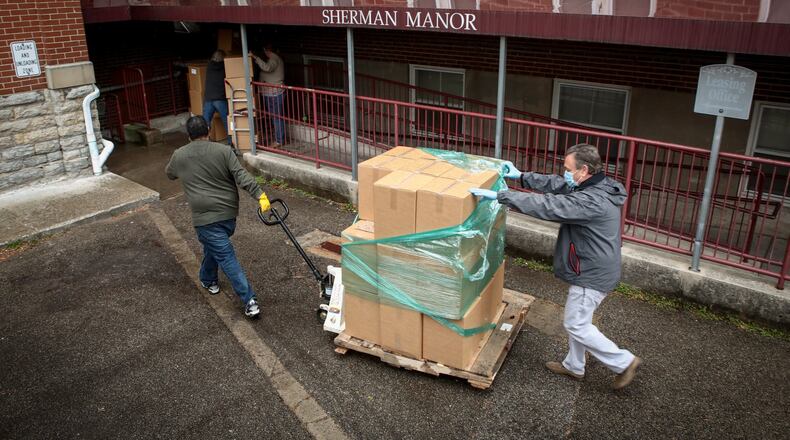“It’s purpose is to foster and improve quality of life for seniors, to remain in their homes and connect to their communities, delay entry into Medicaid, preserve their personal assets and promote a healthy, independent active lifestyle,” she said.
She said the grant guidelines call for 20% of the money to be spent on food assistance, 20% for housing help, at lease 10% must be spent on internet access and “digital literacy” and the rest is at the county’s discretion.
The state awarded $39 million to help 1.1 million seniors who are age 60 and older who are below the poverty level but not on Medicaid. State grant documents show Butler County has 31,794 seniors who qualify.
The drawback is this is a “fast track” grant so the county must have the dollars obligated by June 30 and spent by Sept. 30.
The Council on Aging for Southwestern Ohio manages the Elderly Services Program for the county and Boyko said they have indicated they would like to use the funds to support existing programs that are currently funded by the Elderly Services levy, “in order to offset some of the costs to the levy and perhaps extend it.”
Some of the programs provided include transportation, meals, mental health, adult day services, home health care, housekeeping and home repairs.
Commissioner Cindy Carpenter said she wants Kevin Kurpieski, the adult protective services supervisor with the Department of Job and Family Services, to weigh in on the best use of the new funds.
“I’d be much more interested in seeing what he says the end-met needs are that causes some of these people to be at risk, I’d rather be looking at it that way, from the most serious problems that we have...,” she said. “I’m more interested in seeing who falls through the cracks than I am on just doing the same thing.”
Commissioner Don Dixon said the county already has programs to care for the under served, he wants to make sure they don’t overlook those who have been self-supporting all their lives but now need a hand.
“I think it’s important we don’t forget those people because it’s easy to say we’ve got to help the ones that can’t help themselves,” Dixon said. “We also need to help the ones that have helped themselves that are struggling now.”
Voters overwhelming passed a renewal Elderly Services levy by 77% to 23% in 2020, the levy costs $39.81 per $100,000 in property valuation and generates $10 million annually — the same amount collected for 20 years. The agency served 4,178 clients last year — and are anticipating similar numbers this year — and the monthly program cost is $360 compared to an average $6,361 Medicaid rate for a nursing home.
Ken Wilson, vice president of Programs and Business Operations for the Council on Aging told the Journal-News, they are really limited by the grant deadlines.
“The short time frame with this funding is a challenge but also the fact that it’s one-time funding,” he said. “That limits what you can do because you don’t want to set up a program that can’t be sustained. Sustainability is really important, which why we’re suggesting to the extent that we can using it to sustain the levy program.”
He said their biggest program is home delivered meals — the 2024 budget is $4.5 million — and costs have exploded because of inflation. He said they could extend the life of the levy by about another year.
“We could use this funding to offset those expenses and increase the length of time before we would need to have a waiting list to keep the program within budget,” Wilson said.
He said they would also like to use some of the money for the new home health aide app AddnAide, which fits within the “digital literacy” requirement of the grant. It is new technology that allows the client or family member to schedule their own appointments and get matched with the right aide they need without going through a traditional home care agency.
He said if the commissioners wish, they can explore adding some short-term programs that address currently unmet needs, like utility assistance and home modifications.
“The funding is really needed because we’re seeing higher demand for services as more seniors are wanting to stay independent at home as long as possible,” Wilson said about the new funding. “The use of nursing homes has declined particularly after the pandemic which has put more pressure on local communities to find ways to keep people safe and healthy in their own homes.”
About the Author

